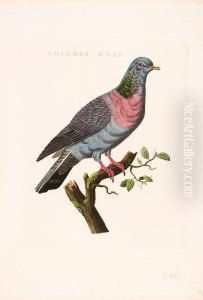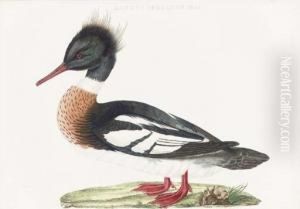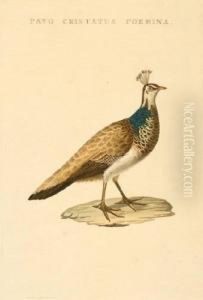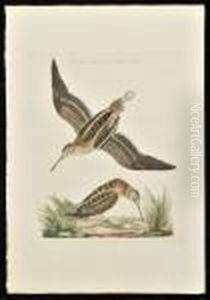Cornelius Nozeman Paintings
Cornelius Nozeman was a Dutch clergyman and naturalist, born in 1721 in Amsterdam, Netherlands. He is primarily known for his significant contributions to ornithology, particularly through his work on the comprehensive bird book 'Nederlandsche Vogelen' (Birds of the Netherlands), which was the first of its kind to cover the avifauna of the Netherlands. Despite his religious duties, Nozeman developed a keen interest in the natural world, and his passion for birds was evident in his detailed observations and descriptions.
Nozeman's 'Nederlandsche Vogelen' was an ambitious project that he began in the 18th century. It was a large folio volume with illustrations made by the artist and engraver Christiaan Sepp and his son Jan Christiaan Sepp. The work was published in parts over many years, and it was not completed until long after Nozeman's death, which occurred in 1786. The book was remarkable for its high-quality hand-colored plates of birds, and it set a new standard for ornithological illustration and description. Unfortunately, Nozeman did not live to see the completion of his magnum opus, as the publication of 'Nederlandsche Vogelen' continued under the supervision of Martinus Houttuyn and later Jan Sepp, concluding in 1829.
Throughout his life, Nozeman was deeply involved with the scientific community in the Netherlands. His work laid the foundation for future ornithological studies in the country and inspired many naturalists who came after him. He was not just an observer of birds but also a meticulous documentarian who provided valuable information about their habitats, behaviors, and distribution.
Nozeman's dedication to the study of birds was intertwined with his role as a clergyman. He served as the pastor of the Lutheran church in Amsterdam and later in Rotterdam. His dual career is a testament to the diverse interests and intellectual pursuits that characterized many scholars of the Enlightenment era. Cornelius Nozeman's death in 1786 marked the loss of a prominent figure in the fields of both theology and natural history, but his legacy lived on through the continued publication and influence of 'Nederlandsche Vogelen'.



